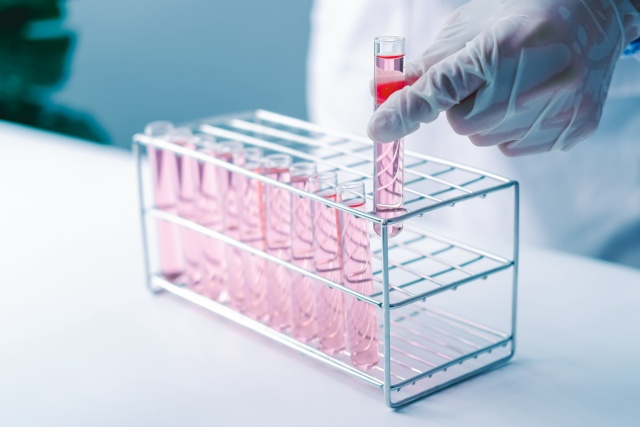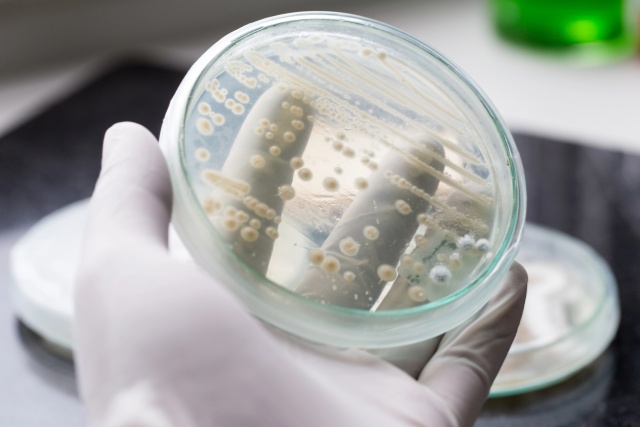April 26, 2020
By Yinqiang
First of all, what is needed to understand is that the nutrients required by microorganisms

1. Nutrients required by microorganisms
The nutrients should meet the needs of microbial growth, reproduction and completion of various physiological activities. Their role can be summarized as forming structures (participating in cell composition), providing energy and regulating functions (constructing enzyme activity and substance transport systems). The nutrients of microorganisms have six major elements including water, carbon source, nitrogen source, inorganic salt, growth factor and energy.
a. Water

Water is an important part of microorganisms and plays an important role in metabolism. There are two forms of water in cells: bound water and free water. Bound water binds to solutes or other molecules and is difficult to use. Free water (or unbound water) can be used by microorganisms.
b. Carbon source
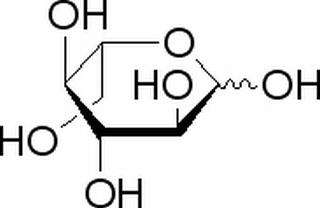
Carbon accounts for about 50% of the dry matter of cells, so microbes have the greatest demand for carbon. All nutrients that are the source of the carbon framework in the cell structure or metabolites of microorganisms are called carbon sources.
There are many types of carbon source materials for microbial nutrition, from simple inorganic substances (CO2, carbonates) to complex organic carbon-containing compounds (sugars, sugar derivatives, lipids, alcohols, organic acids, aromatic compounds and various species of carbon-containing compounds, etc.). But different microorganisms have different ability to use carbon sources. Pseudomonas can use more than 90 kinds of carbon sources. Methane oxidizing bacteria only use two kinds of organic matter: methane and methanol, and some cellulolytic bacteria can only use cellulose.
Most microorganisms are heterotrophic and use organic compounds as a carbon source. There are many types of carbon sources that can be used, and sugar is the best carbon source.
Heterotrophic microorganisms use the carbon source in the body through a series of complex chemical reactions, which are ultimately used to form cellular materials or provide the organism with energy for physiological activities. Therefore, the carbon source is often an energy substance.
Autotrophic bacteria use CO2 and carbonate as the only or main carbon source. CO2 is a completely oxidized substance, and its conversion into cellular components is a reduction process. Therefore, such microorganisms also need to obtain energy from the oxidation of light or other inorganic substances. The carbon source and energy of these microorganisms belong to different substances.
c. Nitrogen source

All nutrients that are sources of nitrogen in substances or metabolites that constitute microbial cells are called nitrogen sources. The content of nitrogen in cell dry matter is second only to carbon and oxygen. Nitrogen is an important element of nucleic acids and proteins. Nitrogen plays an important role in the growth and development of microorganisms. The nitrogen from molecular nitrogen to complex nitrogen-containing compounds can be used by different microorganisms, and different types of microorganisms can use nitrogen sources vary greatly.
Nitrogen-fixing microorganisms can use molecular nitrogen to synthesize the amino acids and proteins they need, and they can also use inorganic nitrogen and organic nitrides. In addition, some photosynthetic bacteria, cyanobacteria and fungi also have a nitrogen-fixing effect.
Many saprophytic bacteria and pathogens of plants and animals cannot fix nitrogen, and ammonium salts or other nitrogen-containing salts are generally used as nitrogen sources. Nitrate must be reduced to NH + 4 before it can be used for biosynthesis. Microorganisms that use inorganic nitride as the only source of nitrogen can use ammonium salts, but not all of them can use nitrates.
Organic nitrogen sources include peptone, beef extract, yeast extract, corn steep liquor, etc. Soybean cake powder, peanut cake powder and fish meal can be used as nitrogen sources in industry. Nitrogen in organic nitrogen sources is often protein or its degradation products.
Nitrogen sources generally only provide raw materials for the synthesis of cytoplasm and other structures in cells, not as energy sources. Only a few bacteria, such as nitrifying bacteria, use ammonium salts and nitrates as nitrogen sources and energy sources.
d. Inorganic salt

Inorganic salts are also indispensable nutrients for the growth of microorganisms. Its main functions include:
- Constituting the components of the cell;
- As the component of the enzyme;
- Maintaining the activity of the enzyme;
- Regulating the osmotic pressure of the cell, the concentration of hydrogen ions and the redox potential;
- As an energy source for certain autogenous bacteria
Phosphorus, sulfur, potassium, sodium, calcium, magnesium and other salts are involved in cell structure and related to energy transfer and cell permeability regulation functions. Microorganisms have a large demand for them (0.0001 - 0.001 mol / L), which is called “macro elements”. Without them, microorganisms cannot grow. Iron, manganese, copper, cobalt, zinc, molybdenum and other salts are generally cofactors of the enzyme, and the demand is not large (10-8 - 10-6mol / L), so they are called “trace elements”. Different microorganisms have different requirements for the above elements. The iron element is between macro and trace elements.
When formulating the medium, macro-elements can be supplemented by adding relevant chemical reagents, of which K2HPO4and MgSO4are the first choices, and they can provide the elements in large quantities: K, P, S and Mg. Trace elements are present as impurities in some chemical reagents, natural water, and natural medium components, and are also present in small amounts on experimental supplies such as glassware, so there is no need to add them separately.
e. Growth factor
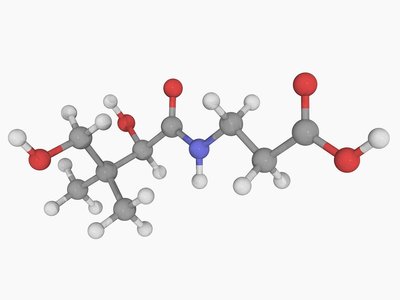
Some heterotrophic microorganisms cannot grow or grow poorly when they are cultured in a medium with a general carbon source, nitrogen source, and inorganic salts. When certain tissue (or cell) extracts are added to the culture medium, these microorganisms grow well, that means these tissues or cells contain the nutrient factors necessary for the growth of these microorganisms. These factors are called growth factors.
Growth factors can be defined as: the nutrients which certain microorganisms can not synthesize from ordinary carbon and nitrogen sources, and need to be added in small amounts to meet the needs of microorganisms. It includes amino acids, vitamins, purines, pyrimidines and their derivatives, and sometimes also includes some fatty acids and other membrane components.
Different microorganisms require different growth factors, some require multiple types, some require only one, and some do not. The growth factor required by a microorganism will also vary with the culture conditions, such as whether there are precursors in the medium, aeration conditions, pH and temperature, etc., will impact the microorganism's demand for growth factors.
Any microorganism directly isolated from nature except its auxotrophic mutation, is called the wild type of the microorganism. Most wild-type strains can grow with simple carbon and nitrogen sources, without the need to add growth factors; after artificial mutagenesis, they often lose the ability to synthesize certain nutrients. In the growth medium of these strains , certain amino acid, purine, pyrimidine or vitamin and other growth factors must be added.
f. Energy
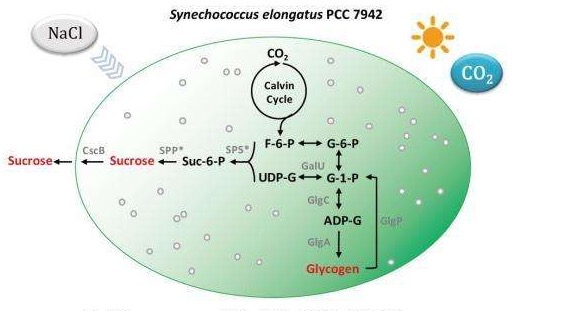
Energy refers to nutrients or radiant energy that provides the initial energy source for the life activities of microorganisms.
The energy source of chemoheterotrophic microorganisms is the carbon source; the energy sources of chemoautotrophicmicroorganisms are reduced inorganic substances, such as NH4+, NO2-, S, H2S, H2, Fe2+, etc., which belong to nitrifying bacteria nitric acid bacteria, thiobacillus, sulfur bacteria, hydrogen bacteria and iron bacteria.
A nutrient often has the function of more than one nutrient element, that is, in addition to single-function nutrients, there are dual-function or even tri-function nutrients. Radiation energy is monofunctional; reduced inorganic nutrients are often dual-functional (NH4+is both an energy source and its nitrogen source for nitrifying bacteria) or even trifunctional (energy, nitrogen, and carbon sources); organic matter often has dual functions Or three functions.
2. Principles that must be followed when preparing medium
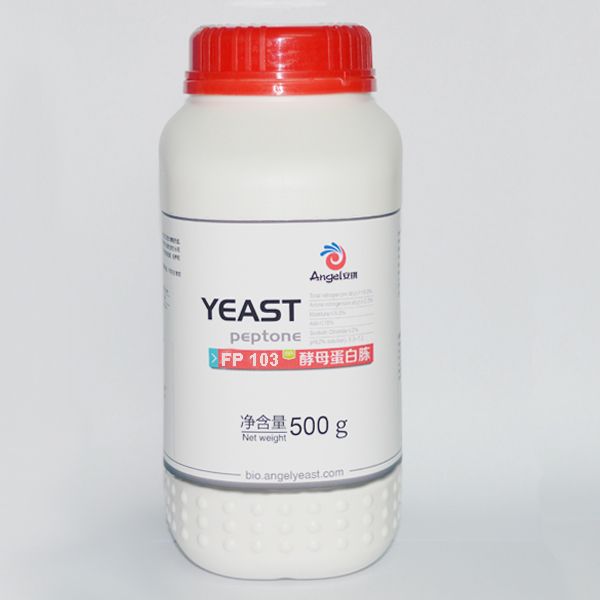
Microbial culture medium usually refers to artificially formulated nutrient substrate suitable for microbial growth and reproduction, or accumulation of metabolites. Broadly speaking, any medium or material that supports the growth and reproduction of microorganisms can be used as a culture medium for microorganisms. A proper medium formula has a great influence on the yield and quality of fermented products.
For different microorganisms and different nutritional requirements, there can be different media. But their preparation must follow certain principles.
a. Nutrients should meet the needs of microorganisms.The nutritional requirements of microorganisms of different nutritional types vary greatly, and should be formulated according to the different requirements of each nutrient element by the bacterial species.
b. The concentration and ratio of nutrients should be appropriate.Too low concentration would not meet the needs of microbial growth; too high concentration would inhibit microbial growth.
High sugar and salt concentrations have bacteriostatic effects.
Carbon to nitrogen ratio (C: N, expressed as the ratio of reducing sugar content to crude protein content): the general medium is C: N = 100: 0.5 - 2.
When designing the ratio of the medium, it is also considered that avoiding the interaction between the components in the medium. For example, when peptone and yeast extract contain phosphate, they will precipitate with calcium or magnesium ions in the medium when heated; At high temperatures, reducing sugars also interact with proteins or amino acids to produce brown matter.
c. The physical and chemical conditions are suitable.pH: Various microorganisms have the optimal pH for their growth and reproduction. Bacteria are 7. 0-8. 0, actinomycetes are 7. 5-8. 5, yeasts are 3. 8-6. 0, and molds are 4. 0-5. 8. For specific microbial strains, each has its own specific optimal pH range, and sometimes it will greatly exceed the above limits. During the growth and reproduction of microorganisms, metabolites that can cause the pH of the culture medium to change are produced. In particular, many microorganisms have a strong acid-generating ability. If improperly adjusted, they will inhibit or even kill themselves. When designing the medium, the pH adjustment capability of the medium must be considered. Generally, buffer or CaCO3should be added to stabilize the pH of the medium. Other: other physical and chemical indicators of the culture medium, such as water activity and osmotic pressure, will also impact the cultivation of microorganisms. When formulating the medium, it is usually not necessary to measure these indicators, because the optimization of the various components and their concentrations in the medium has indirectly determined the water activity and osmotic pressure of the medium. In addition, the redox potentials of various microbial culture media also have different requirements.
d. Cultivation purpose: The composition of the medium directly affects the cultivation target. When designing the culture medium, it is necessary to consider whether to cultivate the cells or accumulate the metabolites of the cells; whether to cultivate in the laboratory or large-scale fermentation.
The nutrient composition of the seed culture medium used for culturing the cells should be rich, and the nitrogen source content should be high, that is, the carbon-to-nitrogen ratio should be low; on the contrary, the fermentation medium used to accumulate a large amount of metabolites, the nitrogen source should be slightly lower than the seed culture medium; Of course, if the target product is a nitrogen-containing compound, sometimes the nitrogen source content of the medium should also be increased.
When designing the medium, special consideration should be given to whether the metabolite is a primary metabolite or a secondary metabolite. If it is a secondary metabolite, it is also necessary to consider whether to add special elements (such as Co in vitamin B12) or special precursor substances (such as phenylacetic acid when producing penicillin G). When designing a medium, especially a medium for large-scale fermentation production, attention should also be paid to the source and cost of medium components, and a medium with a wide source and proper cost should be preferentially selected.
3. Principles of preparation of several culture media

a. Seed medium: a medium suitable for the growth of microbial cells, the purpose is to provide a large number of strong and neat seed cells for the next fermentation. Generally require rich nitrogen sources and vitamins, and raw materials should be refined.
b. Fermentation medium:the medium used to produce the intended fermentation product, the general fermentation product takes carbon source as the main element. The carbon source content in fermentation medium is often higher than that in seed medium. If the nitrogen content of the product is high, the nitrogen source should be increased. In large-scale production, raw materials should be cost effective and readily available, and should also facilitate downstream separation and extraction.
c. Propagation and preservation medium: mainly used for the preservation of strains, most of which are slant medium. For auxotrophic or structural analog-resistant strains or antibiotic-resistant strains, specific corresponding ingredients can be added appropriately to provide pressure.
d. Basic medium:also known as the minimum medium, refers to a synthetic medium that can meet the minimum nutritional requirements of a wild-type strain of a certain species. The basic culture medium of different microorganisms is very different, some are very simple (E. coli), others are very complicated (lactic acid bacteria, yeast or clostridia) so that growth factors and special nutrition are necessary to add.
e. Enriched medium: It is a kind of nutrient-rich medium added with blood, serum, animal (plant) tissue fluid or other nutrients (such as growth factors) to the ordinary medium. It is mainly used for a certain type or a certain type of nutritional oxygen-rich microorganisms, or for the selective cultivation (separation, enrichment) of a certain microorganism. It has the function of promoting the growth of certain microorganisms and inhibiting the growth of other microorganisms. Broadly speaking, the preservation and identification medium also belongs to enriched medium.
f. Selective medium: a medium designed according to the specific nutritional requirements of a certain type or type of microorganism, or resistance to certain physical and chemical conditions. The purpose is to use this medium to separate a certain type or type of microorganism from a mixed microbial population. One is designed according to the needs of certain microorganisms for carbon and nitrogen sources, and the other is designed according to the physical and chemical resistance of certain microorganisms. Such as acidophilic, alkaliphilic, halophilic, enrichment of resistant microorganisms, etc.
 | Published by Yin Qiang Senior manager of Angel Yeast APAC Division |
About Angel Microbial Nutrition:
Angel YE, rich in protein, amino acids, peptides, nucleotides, B vitamins and trace elements. With the advantages of having no allergic source and being non-transgenic, high efficiency and stable quality, Angel YE are widely applied in the biological laboratories and industrial-scale fermentation, promoting the product safety and technical progress in the global fermentation industry.
About Angel:
Angel Yeast Company is a high-tech listed company specializing in yeast and biotech. Product business covers Yeast and Baking, Yeast Extract-Savoury, Nutrition & Health and Biotechnology fields. It is one of the world's leading companies in the yeast industry. Angel has 12 holding subsidiaries and provides products and services for more than 150 countries and regions.
Press contact:
ANGEL YEAST CO., LTD
Address: 168 Chengdong Avenue, Yichang, Hubei 443003, P. R.China
Tel: +86-717-6369227
Fax: +86-717-6368757
email: aie@angelyeast.com

